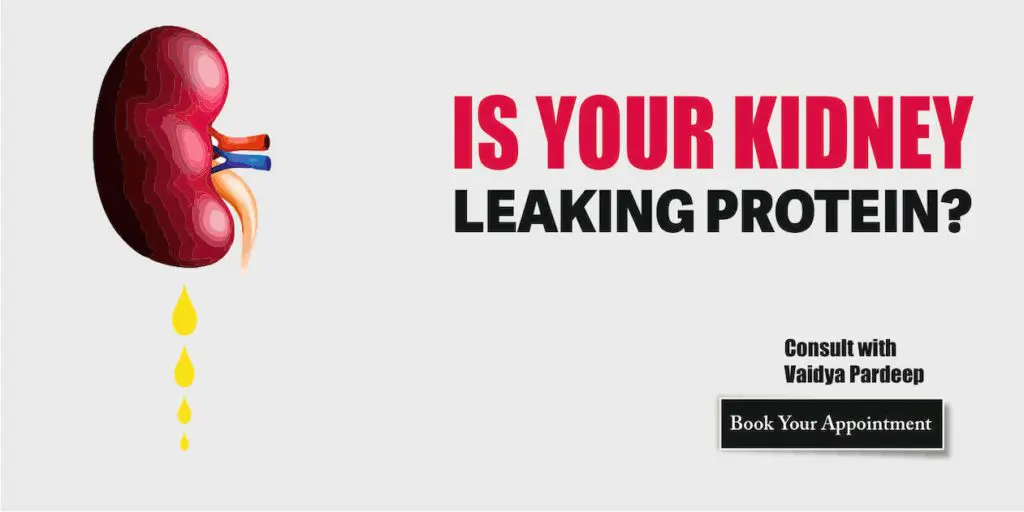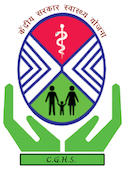The human body is well designed to hold the important and to excrete all wastes. Kidneys and large intestines do this job for trillions of cells. Between these two, the most important is the kidney. Kidneys help in making a great buffer system for the whole society of the cells. But when the kidney fails to hold the most important “proteins”. This condition where kidneys flush the proteins is – Nephrotic Syndrome. The disease is an alarming condition. And Ayurveda treatment can help you in Nephrotic syndrome. Here are details about the disease and Ayurvedic treatment of nephrotic syndrome.
A kidney is a simple network of many tubes. These tubes are made up of cells. These cells are well equipped in flushing the wastes in retaining the useful things in the body. There might be many challenges to this process. One is the condition of Nephrotic Syndrome.

About Nephrotic Syndrome
There are certain conditions and things that show your kidney is not working properly. And this cluster of the things together makes- nephrotic syndrome. These are the following-
- Albuminuria—Kidneys cannot hold proteins and these proteins keep on flushing in urine in excessive quantities.
- Hypoalbuminemia—Because of the same loss of albumin in urine, the body suffers from the lack of albumin in the blood.
- Hyperlipidemia—Fat and cholesterols increase from their normal limits in the body.
- The above three conditions associates with swelling in lower body parts like- legs, feet- especially around the ankle joint. And in a few cases, this swelling can appear on hands and face too.
What is Albumin Protein?
Albumin is a protein. This protein is synthesized by the liver and kidneys are responsible for its excretion and holding in the body. In general terms, this works like a sponge. Where it withdraws extra fluid from the body and brings it to blood vessels. The same extra fluid than flushes out through the kidneys.
Therefore when a kidney cannot hold albumin and it moves into the urine, this sponge-like activity hampers and body stores extra water. This leads to all signs and symptoms of the condition we are talking about- nephrotic syndrome.
Why does Kidney start excreting Protein in urine?
Your kidneys are made of small filters. These cup-like structures we know medically as Glomeruli. The small blood arteries bring blood to this region and filtration takes place. All wastes along with the excess amount of fluid separate from the blood. This filtered “waste” travels to the urinary bladder. The same we pass as urine frequently.
During this process of filtration two key events occur-
- Removal of the waste like urea etc.
- Retaining of blood cells, proteins etc
But when these glomeruli damage due to different reasons, proteins such as albumin starts crossing these filters. The amount of albumin can reach up to 3 gms in a period of 24 hours in the case of Nephrotic Syndrome. It seems very less but actually this amount is just twenty times the normal leakage.
So, in nutshell nephrotic syndrome is a condition where albumin leaks to the urine in high quantities. This happens because of damage to the kidney. And there are multiple causes behind this-
What Causes Nephrotic Syndrome
Nephrotic syndrome occurs because of two conditions.
Primary Causes:
These are causes where damage is to the glomeruli.
Secondary Causes:
This condition appears because of other diseases like diabetes, SLE etc.
The table is all about the primary and secondary causes of NS.
Primary Causes of Nephrotic Syndrome:
The most common cause of primary nephrotic syndrome is damage to the glomeruli. This damage can be because of some developmental issues or because of the scar formation in the glomeruli. In some cases, inflammation of the tissues involved in the filtration process causes leakage of albumin. Antibodies might lodge in the areas and can lead to damage and can cause nephrotic syndrome. For all these conditions different medical terms are used.
- The developmental problem: Minimum Change Disease
- Scar in Glomeruli: Focal Segmental Glomerulosclerosis.
- Inflammation of the membrane: Membranous glomerulonephritis
- In case of deposition of the antibodies, it is known as Membranoproliferative glomerulonephritis.
In young patients- kids, the damage occurs because of Minimum Change Disease. But in adults, the same condition appears because of focal segmental glomerulosclerosis.
Secondary Causes of Nephrotic Syndrome
There are many diseases that induce this condition. These are not diseases of kidneys. But the overall impact on the whole body, therefore, leads to problems. Here are these conditions-
- Diabetes: diabetic nephropathy.
- Systemic Lupus Erythematosus disease: This condition impacts many organs all together and the kidney might be one of these.
- Sjogren’s Syndrome: Deposition of immunocomplexes in the kidney because of Sjogren’s syndrome leads to this condition.
- Certain types of Cancers can also lead to this condition.
Besides the above conditions, there are many other conditions that lead to nephrotic syndrome. These are – multiple myeloma, amyloidosis, HIV, Vasculitis, Hepatitis B.
These conditions can lead to nephrotic syndrome. But there is nothing like that these will surely cause Nephrotic syndrome.
The cause behind the nephrotic syndrome is a must to know the condition. Because when we are sure about the cause. Only then proper treatment can be planned. This applies to the ayurvedic approach of treatment of Nephrotic syndrome too.
Ayurveda About Nephrotic Syndrome
When we come to Ayurveda, the obvious first question is- does Ayurveda recognize any disease like nephrotic syndrome?
There are two ways to answer this question. One is to correlate the condition with any of Ayurveda conditions, according to signs and symptoms. And the second one is to understand the pathology and to deal with the treatment of the same accordingly.
As a physician, I always believe in the second option. Generally, we look at the swelling in nephrotic syndrome and compare this to some type of “Shotha”. Shotha is a condition described in Ayurveda as “swelling”. And this loose analogy is very much common among scholars right now. The main focus remains on the removal of the swelling when it comes to the treatment of the condition.
Swelling is just a symptom. Not the cause. This is the reason while talking about the nephrotic syndrome, I left the symptoms. Because the treatment is not about just some symptoms. Wherever, whenever we need treatment, the only approach is to reverse the pathology. And in a condition like nephrotic syndrome, there is no definitive single pathology. Thus we need to change the line of treatment as per the pathological involvement of the doshas. So we need to understand about the doshas in relation to nephrotic syndrome, that is the only way to understand the nephrotic syndrome.
Which Dosha is involved in Nephrotic Syndrome?
Because Ayurvedic physiology and pathology both revolve around the three doshas. Therefore, it is important to understand the involvement of these in any disease. And in cases like nephrotic syndrome, this becomes more important, because of the absence of confirmative pathology.
Generally, we all love to hear that this disease is about this condition. But there is nothing like this with NS. We will look at all three doshas one by one.
Vata Dosha in Nephrotic Syndrome
The kidney is the seat of Vata dosha. Therefore local dosha is Vata and this makes Vata Dosha an important one when it comes to the treatment of the nephrotic syndrome.
The frothy urine is part of the Vata disease also. Vata is something which leads to the destruction of the tissues. The damage to the tissues leads to the problem.
Pitta Dosha in Nephrotic Syndrome
Inflammation and decay of the tissue belongs to the Pitta dosha. When Pitta traps in the place of the Vata. Here Vata aggravates the pitta and this increases the problem.
Kapha Dosha in Nephrotic Syndrome
The water retention relates to the Kapha Dosha. Without the involvement of Kapha, the wastes increase in the urine.
So there are all three doshas involve in the pathological process of Nephrotic Syndrome.
Can Ayurveda cure Nephrotic Syndrome?
Yes, Ayurveda can cure the condition of nephrotic syndrome. The main thing with Ayurveda treatment is- it works on the reversal of the cause of the problem.
When this is about diabetes, hypertension, or some secondary causes, the main important thing is to control the cause. Because without doing that it is not possible to bring back the health of the kidney.
The ayurvedic treatment approach for Nephrotic Syndrome
In most cases of Nephrotic Syndrome, the main focus is the treatment with medicines. Only in few cases, the patient needs to come to us for the Panchakarma. And these cases are those where things are complicated and protein is high.
Here are the details about Ayurveda Medicines and Panchakarma-
Ayurvedic Medicines for Nephrotic Syndrome
The main thing with ayurvedic medicines is-
- To remove the obstruction from the passage of the blood.
- Help the replenishment of the tissue.
- To control the secondary causes of the problem.
- Cleansing of the system.
These medicines start after the first consultation with Vaidya Dr. Pardeep and Dr. Neetu.
This consultation is possible through Video consultation too. Before that, you need to share all the details of the patient along with all recent reports. And after that, you can make an appointment for Video Consultation.
Panchakarma for Nephrotic Syndrome
Cases where we need Panchakarma therapy. The patient needs to stay with us here for 16 days.
The main Panchakarma procedure for nephrotic syndrome is- BASTI and VIRECHANA.
The selection of the procedure is according to the condition of the patient only.
So this is all about the condition of the patient and the disease, which helps us to decide about the treatment possibilities.













